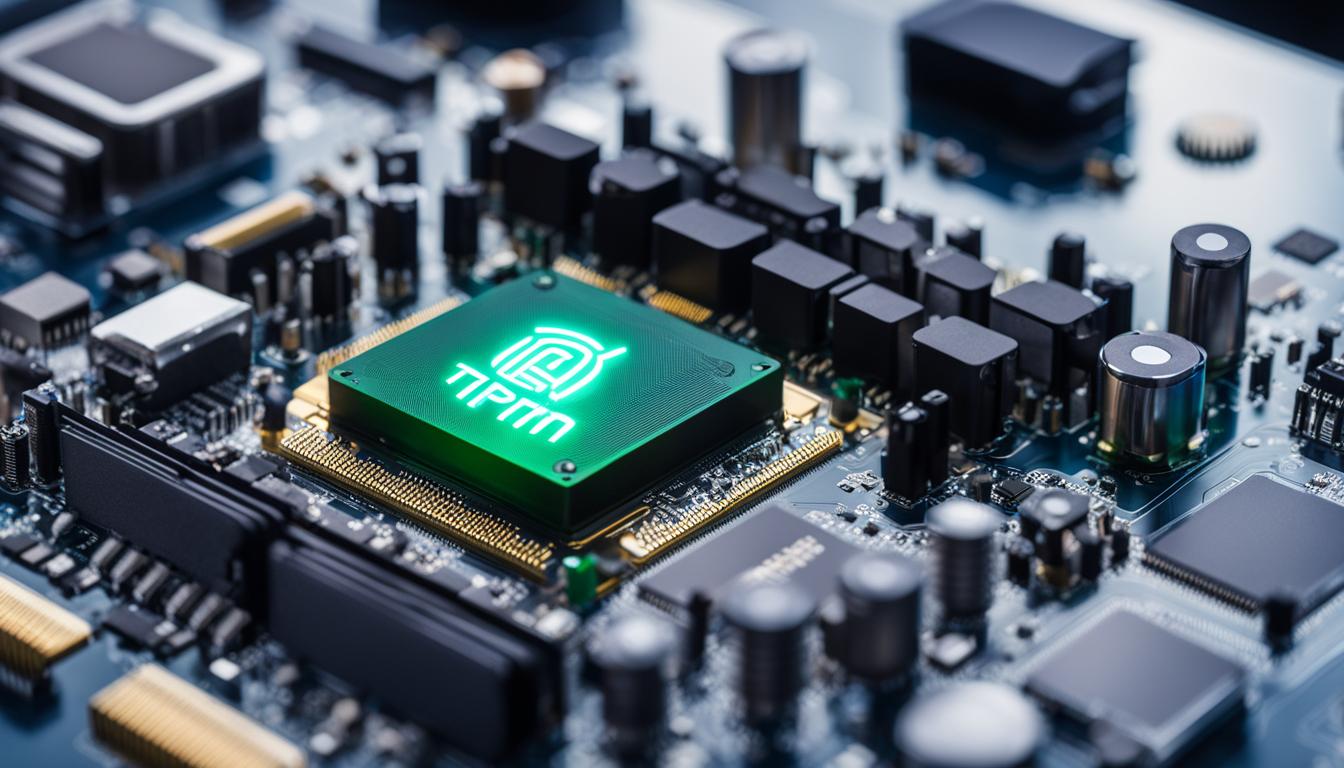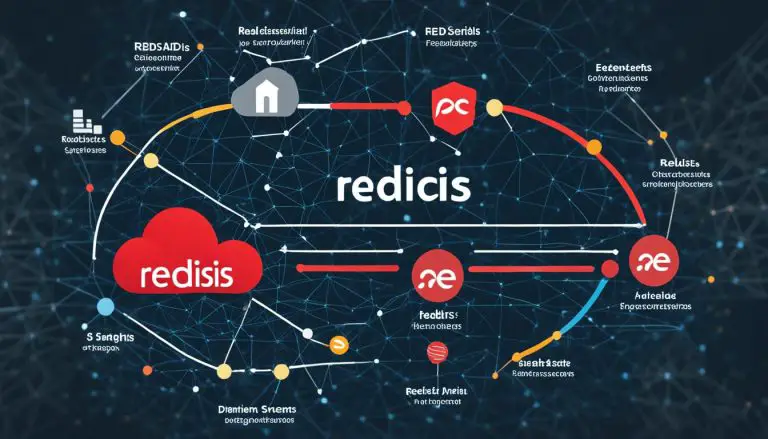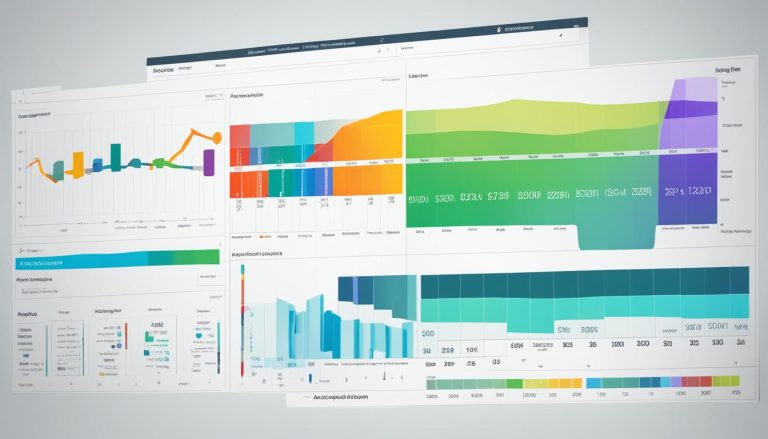Understanding TPM: What is TPM on a Computer Explained
As technology continues to advance, the need for robust security measures becomes increasingly important. One such measure is the Trusted Platform Module (TPM), a specialized chip integrated into a computer’s motherboard. But what exactly is TPM, and how does it contribute to computer security?
At its core, TPM is a hardware-based security solution designed to protect the integrity of a computer system. It performs a range of functions, including generating and storing cryptographic keys, proving user identity, and authenticating devices. By working in conjunction with other security technologies like firewalls, antivirus software, smart cards, and biometric verification, TPM provides an additional layer of protection against potential threats.
TPMs are commonly used for digital rights management, protecting Windows-based systems, and enforcing software licenses. They can store passwords, certificates, and encryption keys, ensuring that sensitive data remains secure. TPMs also support features like biometric identity and access control, measured boot to detect malware, and health attestation for evaluating device health.
Now that we have a basic understanding of what TPM is and its role in computer security, let’s delve deeper into its functions, features, and different implementations.
Key Takeaways:
- TPM is a specialized chip integrated into a computer’s motherboard.
- It provides hardware-based security by generating and storing cryptographic keys, proving user identity, and authenticating devices.
- TPMs are used for digital rights management, protecting Windows-based systems, and enforcing software licenses.
- They can store passwords, certificates, and encryption keys, adding an extra layer of security to sensitive data.
- TPMs work best when combined with other security technologies like firewalls, antivirus software, smart cards, and biometric verification.
The Function and Features of TPM
Trusted Platform Modules (TPMs) provide a wide range of benefits and features that enhance the security and integrity of computer systems. By understanding the functions and capabilities of TPMs, users can make informed decisions about utilizing this technology to protect their devices and data.
One of the key functions of TPMs is the generation and storage of cryptographic keys. These keys are used to secure sensitive information and ensure that only authorized individuals can access it. TPMs also play a crucial role in user authentication, verifying the identity of the user and ensuring that the device is legitimate.
TPMs offer various security features that protect against different types of attacks. They can detect changes to system configurations, mitigating firmware and ransomware attacks. TPMs also provide protection against dictionary and phishing attacks, enhancing the overall security of the system.
“TPMs improve the security of Windows systems by supporting features such as biometric identity and access control, BitLocker Drive Encryption, and credential guard.”
In addition to these security functions, TPMs have a wide range of applications. They can be used for digital rights management, protecting software licenses, and ensuring the integrity of Windows-based systems. TPMs also support features like biometric identity and access control (Windows Hello), virtual smart cards for authentication, and measured boot to detect malware.
Overall, TPMs provide essential security functions and features that help protect computer systems from various threats. By incorporating TPM technology into their devices, users can enhance the security and integrity of their data and ensure that only authorized individuals can access it.
What is TPM 2.0?
TPM 2.0 is the updated version of TPM that brings significant improvements and enhanced flexibility to TPM technology. With TPM 2.0, computer security is taken to a whole new level, offering advanced features and capabilities.
One of the key improvements in TPM 2.0 is the ability to use different cryptographic algorithms against specific threats. This makes TPM 2.0 more adaptable and effective in countering various security risks. Additionally, TPM 2.0 introduces enhancements to basic verification signatures by incorporating support for personal identification numbers, biometric data, and Global Positioning System (GPS) data. These advancements ensure a higher level of security and enable more robust authentication mechanisms.
Another major improvement in TPM 2.0 is the enhancement of key management. TPM 2.0 enables the generation and management of limited and conditional use keys, providing greater control and flexibility in securing sensitive information. This feature is especially important in scenarios where certain data or resources need to be accessed under specific conditions or restrictions.
In summary, TPM 2.0 is a significant upgrade to the trusted platform module technology, offering improved security features and greater versatility. Its ability to utilize different cryptographic algorithms, support advanced authentication methods, and enhance key management makes TPM 2.0 an essential component in ensuring the integrity and protection of computer systems.
Different Types of TPM Implementations
Trusted Platform Modules (TPMs) can be implemented in various ways, each offering different levels of security. Understanding the different types of TPM implementations can help users choose the most appropriate option for their specific security needs.
1. Discrete TPMs
A discrete TPM is a dedicated chip that is highly secure and resistant to tampering. It is a stand-alone module that is separate from the computer’s CPU, providing a higher level of physical security. Discrete TPMs are commonly used in enterprise-grade computers and high-security systems where hardware-based security is crucial.
2. Physical-based TPMs
Physical-based TPMs are integrated into the computer’s CPU, offering a level of security similar to discrete TPMs. These TPMs are designed to be tamper-resistant and provide a secure environment for generating and storing cryptographic keys. They are commonly found in modern laptops, desktops, and servers.
3. Firmware-based TPMs
Firmware-based TPMs run in a CPU’s trusted execution environment and provide a high level of security. They leverage the CPU’s built-in security features, such as Intel Software Guard Extensions (SGX) or AMD Secure Encrypted Virtualization (SEV), to ensure the integrity and confidentiality of sensitive data. Firmware-based TPMs are commonly used in virtualized environments and cloud computing platforms.
4. Software-based TPMs
Software-based TPMs are implemented as a software solution rather than a dedicated hardware module. While they provide some level of security, they are generally considered less secure compared to hardware-based TPMs. Software-based TPMs may be vulnerable to attacks that target the software layer, making them less suitable for high-security applications.
It is important to note that the level of security offered by TPM implementations may vary depending on the specific implementation and the overall security measures in place. Therefore, it is crucial to consider the specific security requirements and risk tolerance when choosing a TPM implementation.
The History of TPM
Understanding the history of Trusted Platform Module (TPM) provides valuable insights into its development and the evolution of its standards. TPMs were created by the Trusted Computing Group (TCG), an international organization focused on developing and promoting open industry specifications for trusted computing hardware and software.
In 2009, version 1.2 of TPM was standardized as ISO/IEC 11889, marking a significant milestone in the advancement of TPM technology. This version introduced key features and capabilities that laid the foundation for future TPM implementations. Since then, TCG has continued to refine and enhance the TPM standard.
“Trusted Platform Module (TPM) is a specialized chip that is integrated into a computer’s motherboard and is designed to provide hardware-based security.”
In 2019, TCG released TPM 2.0, the latest version of the standard. TPM 2.0 brought about several important improvements, including increased flexibility and enhanced security features. These enhancements allow TPMs to use different algorithms against specific threats and provide improved verification mechanisms using personal identification numbers, biometric data, and Global Positioning System data.
The development and standardization of TPM have contributed to its widespread adoption. In 2007 alone, over 100 million branded PCs and laptops were sold with integrated TPMs, highlighting the significant role TPM plays in securing modern computing devices. TCG has also expanded the scope of TPM, releasing draft specifications for TPMs in storage devices and mobile telephones, further extending the reach and potential applications of this essential security technology.

| Year | Milestone |
|---|---|
| 2009 | Standardization of TPM 1.2 as ISO/IEC 11889 |
| 2019 | Release of TPM 2.0 with enhanced features and flexibility |
| 2007 | Over 100 million branded PCs and laptops sold with integrated TPMs |
| Ongoing | TCG’s continued development of TPM standards and expansion into new devices |
Benefits and Applications of TPM
Trusted Platform Modules (TPMs) offer numerous benefits that can greatly enhance computer security. By providing hardware-based protection and encryption, TPMs help safeguard sensitive data and ensure the integrity of computing systems. TPMs have a wide range of applications in various computing areas, offering additional layers of security and enabling trusted operations.
Benefits of TPM
There are several key benefits to implementing TPMs in computing environments:
- Enhanced Security: TPMs generate and store cryptographic keys, providing robust protection against unauthorized access and tampering. They help authenticate devices, ensuring that only trusted platforms are allowed to operate.
- Secure Credentials Management: TPMs can securely store passwords, certificates, and encryption keys, protecting sensitive information from being compromised. This is particularly useful for managing user credentials and enhancing authentication processes.
- Protection against Attacks: TPMs can detect and mitigate various types of attacks, including firmware attacks, ransomware, dictionary attacks, and phishing attempts. With TPMs in place, systems are better equipped to defend against malicious activities.
Applications of TPM
TPMs find application in various computing areas where security is paramount:
- E-commerce: TPMs provide a secure environment for online transactions, protecting sensitive user data and ensuring the integrity of the transaction process.
- Government Applications: TPMs are used in citizen-to-government applications, online banking, and confidential government communications to ensure secure data transfer and protect classified information.
- Network Security: TPMs are beneficial for securing virtual private networks (VPNs) and wireless networks, preventing unauthorized access and enhancing data protection during network communications.
- Data Encryption: TPMs, such as BitLocker, offer file encryption capabilities, enabling users to safeguard their data from unauthorized access, even in the event of theft or loss of the device.
- Mission-Critical Applications: TPMs are crucial for applications that require higher security levels, such as secure email and secure document management. These applications rely on TPMs to ensure data confidentiality and integrity.
With their robust security features and diverse applications, TPMs play a vital role in protecting computer systems, securing sensitive data, and enabling trusted operations. Understanding the benefits and applications of TPMs is essential for individuals and organizations seeking to enhance their security posture and mitigate potential risks.
How to Check for TPM on a Windows Computer
To determine if your Windows computer has TPM, follow these simple steps:
- Go to Start.
- Select Settings.
- Click on Update and Security.
- Choose Windows Security.
- Navigate to Device Security.
If you see a section labeled Security processor, congratulations! Your device has TPM installed.
To check the TPM version, continue with these steps:
- Select Security processor details.
- Look for the Specification version.
- The Specification version will indicate whether your TPM is version 1.2 or 2.0.
It’s important to note that Windows 11 requires TPM version 2.0, so if you’re planning to upgrade to Windows 11, ensure your TPM is compatible.
| Windows Version | TPM Compatibility |
|---|---|
| Windows 10 | TPM 1.2 or TPM 2.0 |
| Windows 11 | TPM 2.0 |
“Having TPM installed on your Windows computer adds an extra layer of security to safeguard your data and ensure the integrity of your system. It’s easy to check if your device has TPM and verify the version. So, take a few minutes to go through the steps and ensure your computer is up to date with the latest security measures.”
Conclusion
After understanding TPM, it becomes clear that it plays a crucial role in computer security. As a specialized chip integrated into a computer’s motherboard, TPM provides hardware-based protection by generating and storing cryptographic keys, authenticating devices, and proving user identity. By working in tandem with other security technologies, such as firewalls, antivirus software, smart cards, and biometric verification, TPM ensures a robust and secure system.
TPM offers many benefits and can be applied in various computing areas. It enhances security in e-commerce, online banking, government communications, and more. TPM is also vital for securing VPNs, wireless networks, file encryption, and password/credentials management. Additionally, TPM’s remote attestation feature helps trusted platforms evaluate the trustworthiness of other PCs in a network.
The introduction of TPM 2.0 has brought about significant improvements and enhanced flexibility to TPM technology. With support for different algorithms and enhanced key management, TPM 2.0 enables compatibility with resource-constrained devices and can be used on new PCs with Windows 10 or Windows 11.
Overall, understanding TPM and its features is essential for users who want to ensure the security and integrity of their systems. By leveraging the capabilities of TPM, individuals and organizations can enhance their protection against various forms of cyber threats and contribute to a safer digital environment.
FAQ
What is a Trusted Platform Module (TPM)?
A Trusted Platform Module (TPM) is a specialized chip that is integrated into a computer’s motherboard and is designed to provide hardware-based security. It helps secure the system by generating and storing cryptographic keys, proving the user’s identity, and authenticating the device.
What are the benefits of using a TPM?
TPMs provide various benefits, including the ability to generate, store, and limit the use of cryptographic keys. They ensure platform integrity, mitigate various types of attacks, protect digital media rights, and help secure Windows systems by supporting features like biometric identity and access control.
What is TPM 2.0?
TPM 2.0 is an updated version of TPM that offers enhanced features and flexibility. It allows TPMs to use different algorithms against specific threats, improves key management, and is compatible with resource-constrained devices and new PCs with Windows 10 and Windows 11.
What are the different types of TPM implementations?
TPMs can be implemented in different ways, including discrete TPMs, physical-based TPMs, firmware-based TPMs, software-based TPMs, and virtual TPMs. Each has its own level of security and resistance to tampering.
What is the history of TPM?
TPMs were developed by the Trusted Computing Group (TCG), and version 1.2 became standardized as ISO/IEC 11889 in 2009. TCG released TPM 2.0 in 2019, which includes new features to enhance security. TPMs have been widely adopted and have draft specifications for storage devices and mobile telephones.
What are the benefits and applications of TPM?
TPMs offer numerous benefits and can improve security in various computing areas, including e-commerce, online banking, government communications, VPNs, wireless networks, file encryption, and password/credentials management. They can also be used in mission-critical applications requiring higher security levels.
How do I check if my Windows computer has TPM?
To check if your Windows computer has TPM, go to Start > Settings > Update and Security > Windows Security > Device Security. If you see a Security processor section, your device has TPM. To determine the TPM version, select Security processor details, and look for the Specification version, which should say either “1.2” or “2.0”.
- About the Author
- Latest Posts
Mark is a senior content editor at Text-Center.com and has more than 20 years of experience with linux and windows operating systems. He also writes for Biteno.com





